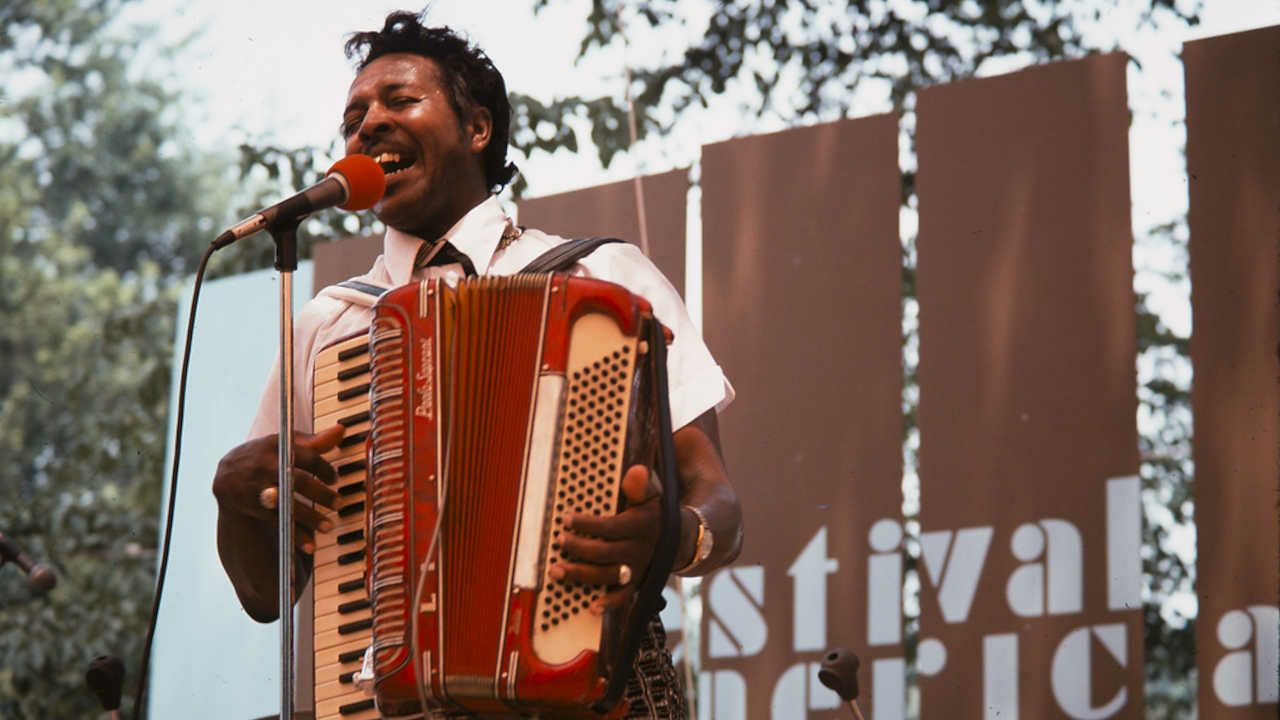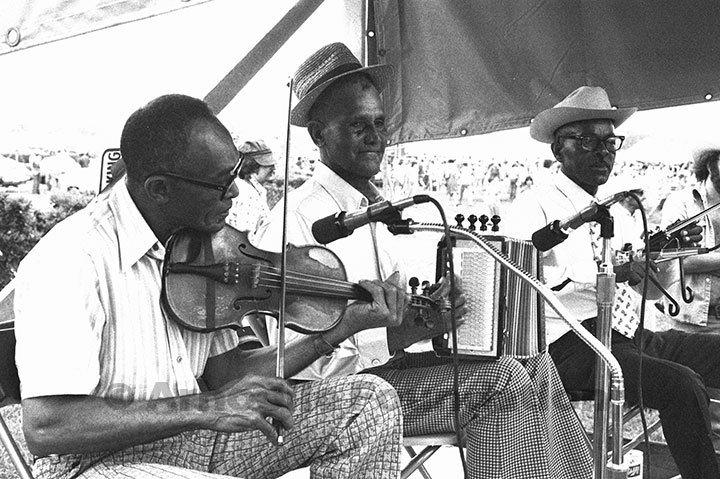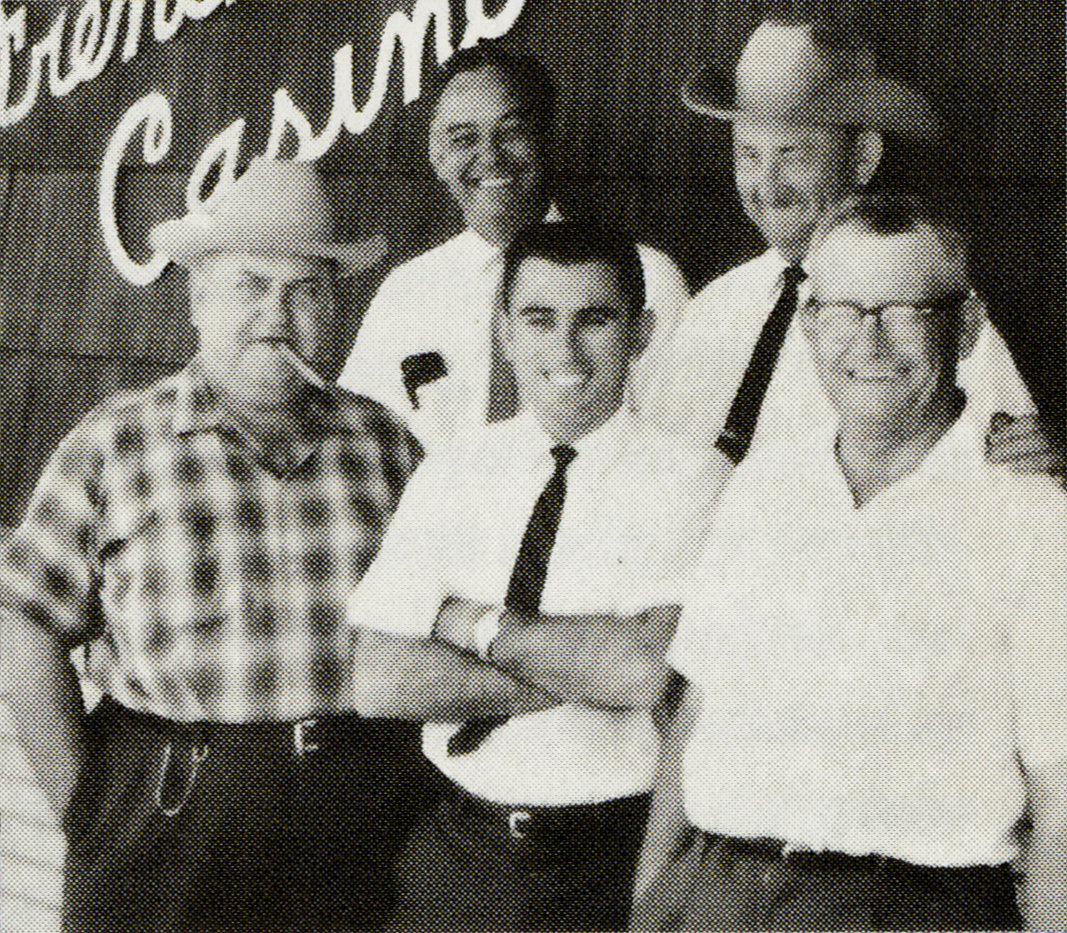Cajun and Zydeco Music: Flavors of Southwest Louisiana

Lesson Hub 5
Join the Band! Instruments of Cajun and Zydeco Music

Which instruments give zydeco and Cajun music their unique sounds?
Fiddler Canray Fontenot and Accordionist Alphonse "Bois Sec" Ardoin, by Chris Strachwitz. Arhoolie Foundation.


Join the Band! Instruments of Cajun and Zydeco Music

Dewey Balfa and Tracy Schwarz, unknown photographer. Folkways Records.
The Fiddle, Accordion, and Beyond
Path 1

25+ minutes

The Savoy-Doucet Cajun Band, by Philip Gould. Arhoolie Records.
Cajun and Zydeco Instrumentation
Although Cajun and zydeco music use many of the same instruments, each genre interacts with them in slightly different ways.


Cajun Musical Instruments, by Firefly Design, Ana. Etsy.
Cajun Instrumentation
As a style of music primarily played in homes and passed down from family to family since the arrival of the Acadians in Louisiana, Cajun music is primarily associated with instruments that were originally played acoustically (without electric amplification).


Zydeco Instrumentation
Zydeco music was influenced by Cajun instrumentation and musical sounds, but also had other musical influences (such as R&B and Rock n Roll).

For this reason, zydeco music has always employed more electric (amplified) instruments.

Nathan and the Zydeco Cha Chas, unknown artist. Sunset Center.
The Acadians brought their fiddles, fiddle tunes, and the song ballads of their ancestors with them as they arrived in Louisiana after “Le Grand Derangement” in the late 18th and early 19th centuries.
Wallace "Cheese" Reed, photo by Chris Strachwitz. Arhoolie Records.


The Early Cajun Sound
In rural, harsh surroundings, without access to many of the other popular instruments of the times (piano, etc.), the fiddle and the voice were the Acadians' primary "music makers."
Generally Speaking .....
The Early Cajun Sound
Fisherman's Home Along the Bayou, Akers, Louisiana, by Russell Lee. Library of Congress.


The fiddle is a wooden acoustic instrument with 4 strings, played with a bow, which took its current form in the 1500s.
Generally Speaking .....
The Fiddle
Potter Folk Fiddle, made by Allan Potter. National Museum of American History.


It is a central instrument in many types of folk music from around the entire world.
Does it look like another instrument you know of?
Text
Although the techniques used here would change throughout the 20th century, this early music was the basis for what was to come.
Cajun Fiddling (Old Style)


Side of Potter Folk Fiddle, made by Allan Potter. National Museum of American History.
Listen to a clip from this audio recording, which is representative of the OLD style of Cajun fiddle playing and singing from the 1800s.
“O Malheureuse,” performed by Dennis McGee
Generally Speaking .....
Double Fiddle

Always a social form of music, two fiddles were often played together.

The fiddle was also a major instrument in Louisiana Creole music from the beginning of the twentieth century onward, and Black fiddle players, with their unique bluesy style of playing, were a major influence on both modern Cajun music and zydeco.
Generally Speaking .....
Creole Fiddling
Right: Fiddler Joseph "Bébé" Carrière and Accordionist Eraste "Dolan" Carrière, Cover art and photo by Chris Strachwitz. Arhoolie Records.



“Joe Pitre a Deux Femmes,” by Canray Fontenot
Above: Fiddler Canray Fontenot and Accordionist Alphonse "Bois Sec" Ardoin, by Chris Strachwitz, Arhoolie Foundation.
Generally Speaking .....
Zydeco: Absence of the Fiddle
John Delafose and the Eunice Playboys, photo by Chris Strachwitz. Arhoolie Records.

However, the fiddle is seen very rarely in modern-day zydeco bands.

Text
Listen again to a short excerpt from the recording of early Cajun music:
What do you notice about the singing?
Attentive Listening: The Voice

“O Malheureuse,” performed by Dennis McGee
In Cajun and zydeco music, often the sound of the singing and the melody of the song are more important than the words themselves.
- This is perhaps because the music is used primarily for dancing (as opposed to telling a story).
Generally Speaking .....
The Voice as an Instrument

- "The Cajun yell," which you can hear in this recording, is a common example of how the voice is used as an instrument, without using words.
The human voice is also a musical instrument--words and other vocal sounds add rhythmic and emotional flavor.
Generally Speaking .....
The Accordion: The Foundation of Cajun and Zydeco Music
A Mouton hand-made in Crowley, replica of the old Monarch, photo by Noelle Dole. Folkways Records.

By the time it made its arrival to Louisiana in the late 1800s, along with German immigrants, the Acadians had been there for almost 100 years!

The most characteristic and defining instrument in modern-day Cajun and zydeco music, the accordion, was invented in Germany and Austria in the 1820s – making it a relatively new instrument in the grand scheme of things.
Text
Why might musicians during the 1800s and 1900s prefer to use this instrument?
Listening: Accordion

"Two-Step in G, J'Etais au Bal Hier au Soir," performed by Gérard Dôle
Listen to a short excerpt from this audio recording:
What do you know about the accordion?
What does it look like?
The accordion quickly gained popularity due to its low cost, portability (a button accordion only weighs about 8 lbs.), and durability.
Unlike a fiddle, it could easily withstand the humidity and extreme temperature changes experienced in the sub-tropical climate of Louisiana.
Generally Speaking .....
Benefits of the Accordion
Globe Accordion, unknown maker. National Museum of American History.


Without any amplification, this instrument can easily be heard over a packed, noisy dance hall.
By the 1920s, the accordion had firmly taken its place alongside the fiddle as the foundation of Cajun (and later zydeco) music.
Generally Speaking .....
Benefits of the Accordion

The accordion is also loud and offers its own accompaniment by supplying a bass and chord section.
The accordion is a "free reed" instrument (a cousin to the harmonica).
Accordion Mechanics
Man with Accordion, unknown photographer. National Museum of American History.


Although the instrument is so young, it has managed to travel all around the world, establishing itself as an important part of many kinds of folk music in Brazil, Mexico, Italy, and more.
An accordion typically has buttons or keys for the melody on the right-hand side, and chords and bass notes on the left-hand side.
The most common variety used in Cajun music is the diatonic, single-row button accordion, sometimes known elsewhere as a melodeon.
Generally Speaking .....
The Accordion in Cajun Music
Black Beauty +Plus, unknown maker. Savoy Music Center.


Diatonic means that the instrument can only reach the full tonal range of one key.
Generally Speaking .....
Accordion in Zydeco Music
Middle: Triple-row accordion. Musica Tipica Panther Accordion, by Hohner. www.hohner.de.

Although the single-row accordion is sometimes also used in zydeco music, triple-row, piano- key, and sometimes double-row accordions are more common.



Right: Piano-key Accordion, Excelsior Accordion Manufacturing Co., National Museum of American History.
Left: Double Row Accordion, photo by Rotatebot. CC-BY-SA-3.0, via Wikimedia Commons.
Additional Supporting Instruments
These instruments were born out of makeshift necessity and have become an integral part of the sound.

Other unique instruments used in Cajun and zydeco music include the triangle and scrubboard, both percussion instruments.


The triangle (or 'tit fer in Louisiana French), found more commonly in Cajun music, was traditionally made from the iron found holding old railroad ties together or other found materials.
It is played with a beater, keeping rhythm with one hand and using a muting method with the other.
Generally Speaking .....
The Triangle
Triangle with Beater, unknown maker. National Museum of American History.


Generally Speaking .....
The Scrubboard
Cleveland Chenier, photo by Chris Strachwitz, Arhoolie Records.

Initially used for doing laundry and not as an instrument at all, the scrubboard (frottoir) is more common in zydeco music and is typically worn over the shoulders of the player.
Two spoons or other metals pieces are run across the ridged surface to create a rhythmic, scraping sound.

The guitar, which is used as a rhythm instrument in Cajun music, wasn't fully integrated as standard accompaniment to the accordion and fiddle until the 1920s.
Generally Speaking .....
The Guitar
Zoerner Guitar, made by Armin Zoerner. National Museum of American History.


Generally Speaking .....
The Guitar


Unlike many forms of folk music, the guitar is rarely used for solo playing in Cajun and zydeco music (never in Cajun and only occasionally in zydeco).
Remember, this is social music––used primarily for group playing and/or dancing.
Guitarists play a distinct, choppy rhythm on the guitar, following the simple chords of the song.
Generally Speaking .....
Traditional Instrumentation: Cajun Band
Hackberry Ramblers Minus Broussard, Crawford Vincent, Luderin Darbone, Jack Theriot, by Ron Yule. Luderin Darbone Collection.

As the music continued into the twentieth century, drums became more common in live Cajun bands and are frequently seen today.

Before the advent of amplification, a common Cajun band would be made up of fiddle, accordion, acoustic guitar, and sometimes triangle.
Generally Speaking .....
The Electric Guitar
(Top) Steel Guitar, Gibson Guitar Corporation. National Museum of American History.
(Bottom) Electric Guitar, unknown maker. National Museum of American History.



Beginning in the mid 20th century, Cajun bands started to include the electric guitar and the steel guitar (pedal steel, lap steel, Hawaiian steel guitar)
- Accordion (diatonic, single row)
- Fiddle (often two, known as "double fiddle")
- Acoustic, electric, or steel guitar
- Electric bass (sometimes)
- Drums (sometimes)
- Triangle (sometimes)
Generally Speaking .....
Modern Configuration: Cajun Band


Generally Speaking .....
Instruments in the Zydeco Band


Saxophone, unknown maker. National Museum of American History.
Zydeco ensembles (gaining popularity in the 1950s), added more electric instruments, such as drums, electric guitar, and electric bass. The saxophone was also added to the mix.
"Ride Em Cowboy," performed by Clifton Chenier
- Accordion (piano, or double/triple row)
- Scrubboard
- Electric guitar
- Electric bass
- Drums
- Triangle (sometimes)
- Saxophone (sometimes)
Generally Speaking .....
Modern Configuration: Zydeco Band

Nathan and the Zydeco Cha Chas, unknown artist. Sunset Center.

Learning Checkpoint
-
In what ways are Cajun and zydeco instrumentation similar?
-
In what ways are Cajun and zydeco instrumentation different?

End of Path 1: Where will you go next?


Cajun & Zydeco: Similar Songs/ Different Sounds
Path 2

20+ minutes



Above: Cajun Fais Do-Do, cover art by Wayne Pope. Arhoolie Records.
Below: Joe Pete Got Two Women. cover art by Elizabeth Weil. Arhoolie Records.
Similar Repertoire/Different Instrumentation
Different versions of the same song often exist in both Cajun and zydeco repertoires.


Above: Zydeco group John Delafose and the Eunice Playboys.
Right: Cajun musician Wallace "Cheese" Reed.
Photos by Chris Strachwitz, Arhoolie Records.

Differences in instrumentation between these genres can create an entirely different feel.
"Grand Mamou": Example 1
Which instruments do you hear?
Based on what you have learned so far, is this an example of Cajun or zydeco music?

Listen to an excerpt from this version of a song called "Grand Mamou":
Cajun Instrumentation

In this CAJUN version of the song, by Cyprien and Adam Landreneau, the instruments are:
- Accordion
- Voice
- Fiddle
- Triangle
In the next activity you will listen to several short excerpts from this recording, focusing on the role of a different instrument each time through.

Cyp and Adam Landreneau with Band, photo by Chris Strachwitz. Arhoolie Records.
Attentive Listening: Cajun Version
How many fiddles are playing? Can you hear a high-pitched melody, and the lower chords being repeated rhythmically?


How does the accordion interact with the fiddle? Can you hear the bass notes it plays, and the melody?

What role does the voice play in this recording? Does it follow an instrument? If so, which one? What does the voice add to this recording (other than words)?


What rhythm is the triangle playing? Does the triangle part help you know that this is a waltz in ¾?
"Grand Mamou": Example 2
Next, you will listen to an excerpt from a different version of the same song: "Grand Mamou":
Which instruments do you hear?
Based on what you have learned so far, is this an example of Cajun or zydeco?

Zydeo Instrumentation

In this ZYDECO version of the song by John Delafose, the instruments are:
- Accordion
- Voice
- Scrubboard
- Electric Guitar
- Bass
- Drums
In the next activity you will listen to several short excerpts from this recording, focusing on the role of a different instrument each time through.

Attentive Listening: Zydeco Version
Which instrument is leading this recording? Is the accordion mainly playing melody, rhythm, or harmony?

What role does the voice play in this recording? Does it follow an instrument? If so, which one? What elements, other than words, does the voice add?

What rhythm is the scrubboard keeping? Can you tell by the scrubboard that this is a waltz in ¾?

Can you hear the guitar and the bass separately from one another? Is the guitar keeping rhythm, or playing an interlude?



Is the drum prominent in this recording or set back? Is it the primary instrument keeping rhythm?

Discuss the similarities and differences between the two recordings, listening again to each if needed.
Generally Speaking .....
Optional: Compare and Contrast

Zydeco version (by John Delafose)
Cajun version (by Cyp and Adam Landreneau)
Which instruments are playing similar roles?
How do the vocal styles compare?
What are the biggest differences in overall style that you notice?
Learning Checkpoint
- Cajun and Zydeco music share repertoire, but the sound and “feel” are often very different. Why?

End of Path 2: Where will you go next?


Build a Band!
Path 3

20+ minutes


Musicians in Cajun Band Contest at National Rice Festival. Crowley, Louisiana, by Russell Lee. Library of Congress.
Build a Band!
In this path, you will have a chance to focus in on each instrument in a Cajun band, build your own band, and perform a song!



Attentive Listening: "Hip et Taïaut”
It is said to be the Cajun version of a defining zydeco tune called “Les Haricots Sont Pas Salés” (Beans are not Salty).
The lyrics are somewhat non-sensical (they don’t make a lot of sense . . . but you’ll get to read them later).

The song you will be performing is called “Hip et Taïaut” (pronounced Hihp ay Tahee-yoh).

"Hip et Taiaut," performed by Joe Falcon.
Engaged Listening: Time and Rhythm
- Create your own rhythm pattern to clap/play along with the recording . . . perhaps try playing it on a triangle!


- Clap/pat the beat:
What is the meter/time signature? How can you tell? (try to count out loud)
-
Which is stronger: the downbeat or the upbeat?Clap along and add the accent on the stronger beat.
- Listen closely to the drum part:
Clap/pat along or play it on an instrument.
Engaged Listening: Text/Voice
- Listen, focusing on the vocal part (begin at 0:55):
Notice the rhythm of the melody.
Notice the vocal timbre/tone color.
- Listen again:
Try to hum along with the melody.
- Read the English translation of the lyrics:
Discuss the meaning (or lack of meaning of the words)
- Practice your French:
Using the lyrics sheet/pronunciation guide, speak the words out loud, one line at a time.
- Try to sing along with the recording!


Engaged Listening: Chords
- Practice playing the C, F, and G chords on a chordal instrument (like ukulele, guitar, or keyboard).
- Listen, beginning at 0:55:
Follow along with the chord changes on the sheet music.
For how many beats is each chord played before it switches?
Practice playing the chord changes (with and/or without the recording).
- Listen for the rhythmic style of the chordal accompaniment on the recording:
Can you imitate it on your instrument?


Engaged Listening: Melody
- Listen to the melody (played by the accordion and sung).
- Learn the melody (see melodic sheet music or learn by ear) on a piano, accordion, violin, xylophone, or any other melody instrument.
- See if you can play the basic melody along with the accordion or singer’s voice on the recording.


Decide which instrument / element appeals to you most:
- Singing: (voice)
- Rhythm: triangle, drum, clapping (playing the part of the drum)
- Harmony/Chords: guitar, ukulele, piano (playing the part of the guitar/bass on a chordal instrument)
- Melody: piano, violin, etc (playing the part of the accordion and fiddle on a melodic instrument)
Break into small groups (at least one person on each part) and practice your parts together!
Generally Speaking .....
Music Making: Build Your Band!


Learning Checkpoint
-
How did you use (or change) music elements like melody, rhythm, instrumentation, and harmony (chords) in order to build your own “Cajun-style” band?


End of Path 3 and Lesson Hub 5: Where will you go next?






Lesson Hub 5 Media Credits

Audio courtesy of
Smithsonian Folkways Recordings
Video courtesy of
Louisiana Digital Media Archive
Smithsonian Folkways Recordings
Smithsonian Folklife Festival
Images courtesy of
The Arhoolie Foundation
Firefly Design
Hohner Accordions
Library of Congress
National Museum of American History
Smithsonian Folkways Recordings
Savoy Music Center
Sunset Center
Ron Yule

© 2022 Smithsonian Institution. Personal, educational, and non-commercial uses allowed; commercial rights reserved. See Smithsonian terms of use for more information.
This Lesson was funded in part by the Grammy Museum Grant and the Smithsonian Youth Access Grants Program, with support from the Society for Ethnomusicology and the National Association for Music Education.
For full bibliography and media credits, see Lesson 5 landing page.



